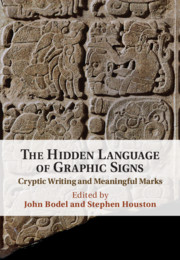Introduction
Making a Mark
Published online by Cambridge University Press: 23 August 2021
Summary
Let us begin with myths, if only to swat them down. There are the claims that systems of writing are committed to transparency and precise records of sound; that the target is the language behind such orderly marks; that readers, not viewers, matter most; and that meaning of a complex, organized sort is best communicated by phonic graphs (e.g., Sampson 1985: 27; see also Drucker 2014; Hudson 1995: 32–33, for the origin of these ideas in an “ideology of openness”). But what if the vehicle were as important as its passengers? What if embellishments mattered deeply, if hidden writing, slow to produce, slow to read, the opposite of hurried cursives, played as enduring a role as more accessible graphs? And what if meaningful marks did continuing service alongside records of spoken language? This book zeroes in on hidden writing and alternative systems of notation. It attends to writing that, by its formal intricacy, deflects attention from language. It aims at graphs or notations that target meaning by direct entrée, without passing through records of sound. What matters in these graphic systems is useable, readily accessed meaning.
- Type
- Chapter
- Information
- The Hidden Language of Graphic SignsCryptic Writing and Meaningful Marks, pp. 1 - 16Publisher: Cambridge University PressPrint publication year: 2021



